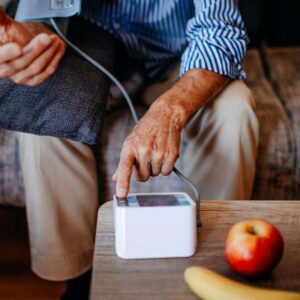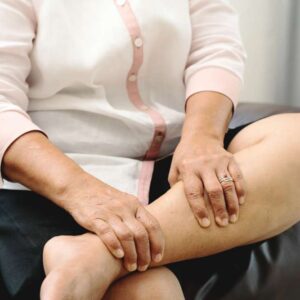Cry Away Cancer With This Kitchen Staple
- Bring on the tears to boost your health
- The smellier the better
- Get chopping! Find out why.
Dear Reader,
Most of my memories of my grandmother’s cooking have one food in common — onion.
Whether she was making spaghetti, sandwiches, or chicken, she was constantly chopping up or chewing on a raw onion.
And when she wasn’t adding onion to what she was cooking, she was chopping it up for a veggie tray.
In fact, one of my most favorite things about visiting her is the ever-present tray of vegetables from her garden with every meal, even sometimes at breakfast!
While there are always a variety of veggies to choose from like cucumbers, tomatoes, and peppers, for her, the star of the tray is either a raw, very pungent onion or raw green onions.
But to 9-year-old me, this was pure insanity.
I often thought, Why would anyone want to eat a raw onion?! They are smelly and make your eyes water!
Actually, one of my brothers and I were so disgusted by them we referred to onions as the “devil’s fruit” because of their pungent smell and taste. (We later grew up and realized that onions aren’t fruit and the devil has nothing to do with them, but it got the point across at the time.)
Yet, whether she knew it or not, all of those foul-smelling onions were helping to keep my grandma healthy. And it seems as though they worked. She’s 92 and has a totally clean bill of health!
Today, Living Well Daily will take you on a walk through the onion patch to bring you the best variety of onions to ensure you reap the most health benefits.
First, let’s talk about what onions can do for you.
![]() Allium Powers
Allium Powers
Onions may be the most popular of the Allium vegetables, but there are many powerful members in their family. These include all varieties of edible onions, garlic, shallots, chives, and leeks.
All Allium veggies have similar nutritional profiles, with many nutrients and macro nutrients, except garlic, which has a higher mineral content. 2
Content of selected nutrients in raw Allium vegetables

Source: National Center for Biotechnology Information
In addition, all members of the Allium family have many bioactive compounds. Some of these include flavonoids, antioxidants, and phenolic compounds, which help fight cancer — a disease that is estimated to kill over 595,000 Americans this year.1
Flavonoids and phenolics fight cancer by deactivating free radicals and slowing the productions of substances that can cause damage to normal cells.
Another key health-promoting and cancer-fighting component in Allium vegetables is bioactive sulfur compounds. These compounds are responsible for the distinct smells and flavors of onions and garlic. It’s thought that theses sulfur-based compounds may help impede tumor growth.2
Not only do they destroy cancer, there is evidence that Allium vegetables can help support heart health due to their high levels of quercetin, a powerful flavonoid.3
To sum it up, Rui Hai Liu M.D., Ph.D., a food scientist and associate professor at Cornell University who lead a study on the powers of alliums reports, “Onions are one of the richest sources of flavonoids in the human diet, and flavonoid consumption has been associated with a reduced risk of cancer, heart disease, and diabetes. Flavonoids are not only anti-cancer, but also are known to be anti-bacterial, anti-viral, anti-allergenic, and anti-inflammatory.”4
While all onion and garlic types offer health benefits, it’s important to select the most nutritious variety and then prepare it in a way that preserves the bioactive compound.
![]() No Onion No Cry
No Onion No Cry
Liu points out in his study that certain alliums have higher levels of bioactive compounds:
Our study of 10 onion varieties and shallots clearly shows that onions and shallots have potent antioxidant and antiproliferation (cancer growth) activities and that the more total phenolic and flavonoid content an onion has, the stronger its antioxidant activity and protective effect.4
While you may prefer the sweeter and less odiferous qualities of a Vidalia, they have the lowest phenolic content. You may want to consider switching to shallots, which have a level of phenolic chemicals that is six times higher.
And for higher flavonoid levels, use Western Yellow onions — they have 11 times more flavonoids than the milder Western White.4
A good rule of thumb here is the more pungent, bitter, and tear-producing an onion is, the better it is for you.
When a bulb of an allium plant is crushed, chewed, or chopped, it releases its cancer-stopping chemicals. However, some of these compounds are heat sensitive.
In order to get the most health out of your alliums, it’s probably best to eat them raw, just like my grandma.
If you want to cook them, be sure to chop them finely in order to cause the chemical reaction that produces the protective bioactive compounds. Remember, when your eyes begin to tear, it’s because of all the health-boosting and cancer-fighting compounds being created! 5
If you have a raw onion or garlic recipes you want to share, please do! nmoore@lfb.org.
Live well,

Natalie Moore
Managing editor, Living Well Daily
Sources
[1] Cancer Facts & Figures 2016
[2] Garlic and onions: Their cancer prevention properties
[3] What’s New and Beneficial About Onions
[5] Onions and Garlic are Anti-cancer Foods
Written By Natalie Moore
Natalie Moore is a dedicated health researcher with a passion for finding healthy, natural, and science-based solutions. After a decade of direct healthcare experience in western and natural medicine, she was involved in public health research before joining Living Well Daily.
View More Free Articles
The 5 Health Numbers Your Doctor Wishes You'd Track
Have you ever been told you should “advocate” for yourself when it comes to your healthcare and wondered what that really means? It’s not just a buzzword—it’s a powerful concept that empowers you to take charge of your own health journey. In fact, it could save your life. Being your own best health advocate starts...
Do THIS Every 20 Minutes to STOP Digital Eye Strain
Our eyes are under assault—they are the true victims of our current digital age. And it’s because we are constantly glued to screens… phones, tablets, computers, TVs—you name it. Unfortunately, that screen time is taking a serious toll. Digital eye strain affects millions worldwide. In fact, up to 50 percent of computer users could develop...
Mailbag: The Calcium Mistake That's Hardening Your Arteries
“What type of calcium is best to take with bisphosphonates for osteoporosis? I know some varieties can build up in arteries. Thanks for the help.” —Bone Builder Hi Builder, When a patient asks me about calcium, I ask them a peculiar question in return… “Ever wonder how elephants and giraffes build and maintain their massive...
Doctor-Approved Method to Ditch Blood Pressure Meds
In a world where drug solutions dominate healthcare, it’s refreshing to discover that best remedies sometimes don’t involve a single pill. A groundbreaking study shows simple relaxation techniques could be your secret weapon against one of America’s deadliest health conditions. Best of all? It’s free, easy to start right away—and your results are bound to...
Trouble Hearing? Your Heart Could Be at Risk
With research exploding and data pouring in, scientists are uncovering some weird (and surprisingly helpful) health connections. Today’s odd couple? Hearing loss and heart failure. Turns out your ears and your ticker are more connected than you ever imagined. A major study published in the journal Heart looked at over 164,000 people for nearly a...
Stay Up Late? It Could Destroy Your Mental Health
If you dread mornings but come alive at night, there’s concerning new research you need to know about. A recent study found that “night owls” are at higher risk for depression. But before you rush to set your alarm to get up with the sun tomorrow, there’s more to the story… Chronotypes are essentially your...
Go from Flabby to Fit with this Common Vitamin
If you’re like many of us, you woke up one day, looked in the mirror, and realized you’re no spring chicken anymore. Even worse—when you weren’t paying attention—it seems you somehow misplaced the muscles of your youth and have gone from fit to flabby. Aging has a way of humbling us like that. But scientists...
Seasonal Allergy “Off Switch” Discovered in the GUT
“Doc, why am I suddenly suffering from seasonal allergies when I’ve never had them before?” It’s a question I get all the time—and my answer might surprise you. Stop looking up at the trees—and start looking down at your gut… Your sneezing fits, itchy eyes, and runny nose might have more to do with what’s...
“Canary in the Coal Mine” Test Sniffs Out Brain Issues Early
One of the most common questions I get is how to tell if you’re starting to experience cognitive decline. I get it—losing your memory is scary, especially when it sneaks up on you. But here’s some exciting news that might put your mind at ease. A fascinating new study suggests that your nose might be...
BEAT Stubborn Leg Swelling Without Dangerous Diuretics
“I need help with edema.” —Swollen Hi Swollen, When patients complain of edema—fluid retention that causes feet, ankles, and legs to swell—I explain that, while conventional medicine immediately prescribes diuretic drugs, nature offers us effective solutions we can try first. I’ll share those in just a moment, but first, let’s take a quick look at...









